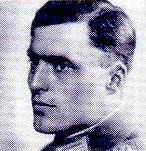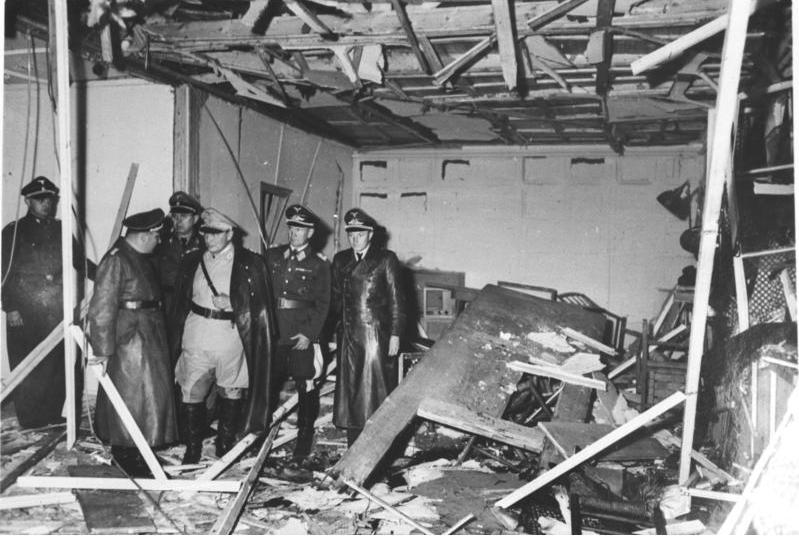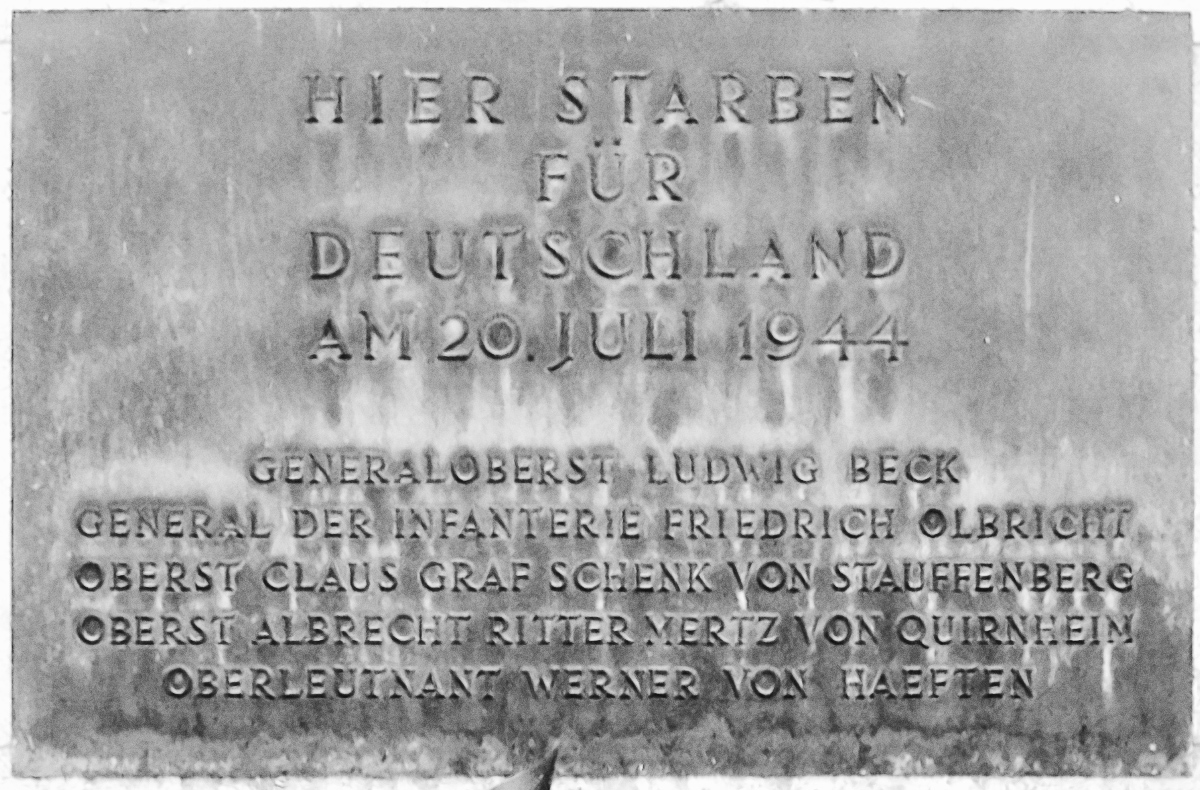The most famous assassination attempt on the life of Adolf Hitler took place on July 20th 1944 at the Wolfsschanze or Wolf’s Lair headquarters near Rastenburg, East Prussia. The plot was codenamed Operation Valkyrie and was led by the German aristocrat and army officer Claus Schenk Graf von Stauffenberg in conjunction with General Friedrich Olbricht and General Ludwig Beck of the German general staff. The plot was the culmination of a more widespread anti-Nazi German resistance movement to overthrow Hitler and the Third Reich. This feature will commemorate the 70th anniversary of Operation Valkyrie and explore how the story of Stauffenberg and the July assassination plot is represented in the UL’s German collections.

Claus Schenk Graf von Stauffenberg (source)
Claus Schenk Graf von Stauffenberg was born in 1907 into the German aristocracy and began his military career in the 1920s before Hitler and the Nazis came to power in 1933. Although he was never a member of the Nazi party, he did support Hitler’s invasion of Poland at the outbreak of the Second World War in 1939 and was severely wounded in action in Africa in 1942. It was not until 1942-43 that Stauffenberg became one of the central figures of the German resistance movement within the Wehrmacht and by July 1944 he was the main driving force behind the plot to assassinate Hitler.
The UL holds a number of biographies of Stauffenberg including: “Eberhard Zeller : Oberst Claus Graf Stauffenberg : ein Lebensbild (1994)” at 571:73.c.95.376 and “Peter Steinbach : Claus von Stauffenberg : Zeuge im Feuer (2007)” at 2008.7.1634. Stauffenberg’s brothers were also implicated in the plot and their story is comprehensively told in “Peter Hoffmann : Claus Schenk Graf von Stauffenberg und seine Brüder (1992)” at 571:73.c.95.342. On a more personal level, Stauffenberg’s son wrote a more private recollection of his father: “Berthold Schenk Graf von Stauffenberg : Auf einmal ein Verräterkind (2012)” at 2012.8.5748. An alternative contemporary view of Stauffenberg is presented by Hans Bernd Gisevius, one of the few survivors of the German resistance movement, in his 1946 two volume autobiography: “Hans Bernd Gisevius : Bis zum bittern Ende (1946)” at 571:75.c.90.65-66.

Wolfsschanze after the explosion (source)
There were several abortive assassination attempts on Hitler’s life before Stauffenberg finally went ahead with Operation Valkyrie on July 20th 1944. Accompanied by his aide, Lieutenant Werner Von Haeften, Stauffenberg attended Hitler’s military conference at the Wolfsschanze in East Prussia, carrying a bomb in his briefcase. The location of the conference was unexpectedly changed at the last minute from the underground Führerbunker to the main briefing room above ground due to the hot weather. At around 12.30pm Stauffenberg made an excuse to use a nearby washroom and armed the first bomb. A guard knocked, urging him to hurry as the meeting was going to begin, so he left behind a second bomb with Von Haeften. He returned to the briefing room and placed the briefcase under the conference table next to Hitler. After a few minutes, he took a pre-arranged telephone call and left the room. The briefcase was then moved by Colonel Heinz Brandt. At around 12.45pm the bomb exploded, destroying the conference room and killing three officers and a stenographer. Hitler survived, shielded from the blast by the solid-oak conference table leg. His trousers were in tatters and he suffered a perforated eardrum, but he was alive. Stauffenberg and Von Haeften swiftly drove to a nearby airfield, convinced that Hitler was dead, as no one could have possibly survived the explosion. On his return to Berlin, Stauffenberg, General Friedrich Olbricht and General Ludwig Beck of the German general staff put their military coup into action, but when Goebbels later announced by radio that Hitler had survived, and when Hitler himself personally spoke on state radio that same evening, the conspirators soon realised that the coup had failed. They were hunted down to their Bendlerblock offices in Berlin, where they surrendered after a brief shoot-out.
The events of July 20th 1944 are examined in detail in: “Gerd R. Ueberschär : Stauffenberg, der 20. Juli 1944 (2004)” at 571:75.d.200.19 and “Tobias Kniebe : Operation Walküre : das Drama des 20. Juli (2009)” at C208.c.5446 . The UL also holds an extensive collection of less academic material regarding the assassination plot, such as “Gedenkstätte Deutscher Widerstand : Claus Schenk Graf von Stauffenberg und der Umsturzversuch vom 20. Juli 1944 (2007)” at 2008.9.3103 . The historiography of Operation Valkyrie is explored in “Rüdiger von Voss : Staatsstreich vom 20. Juli 1944 : politische Rezeption und Traditionsbildung in der Bundesrepublik Deutschland (2011)” at C206.c.4879 . Over the years, the event has been commemorated in a variety of ways. The website www.20-juli-44.de gives access to a number of documents and speeches made by Willy Brandt and others commemorating the event. More recently, to commemorate Stauffenberg and the 70th anniversary of the attempted assassination, Chancellor Angela Merkel opened a new permanent exhibition at the German Resistance Museum in the Bendlerblock, Berlin entitled “Stauffenberg und das Attentat vom 20. Juli 1944”.

Bendlerblock Memorial (source)
Hitler exacted a terrible retribution for the events of July 20th 1944. General Friedrich Fromm convened an impromptu court martial on the night of July 20th and condemned the leaders of the conspiracy to death. Beck committed suicide whilst Stauffenberg, von Haeften, Olbricht and another officer, Albrecht Mertz von Quirnheim, were executed by a makeshift firing squad in the courtyard of the Bendlerblock. Stauffenberg was third in line to be executed, but von Haeften placed himself between Stauffenberg and the firing squad and took the bullets meant for Stauffenberg. In August, Stauffenberg’s brother, Berthold, was one of eight conspirators executed by slow strangulation in Plötzensee prison, Berlin. The entire execution was filmed for Hitler to watch at his leisure. And over the coming months, it is estimated that over 7,000 Germans were killed or sent to concentration camps as Hitler took revenge on the enemies of the Third Reich. The fate of Stauffenberg’s fellow conspirators is explored in: “Antje Vollmer & Lars-Broder Keil : Stauffenbergs Gefährten : das Schicksal der unbekannten Verschwörer (2013)” at C207.c.4952. The conspirators, however, had the final victory. Less than a year later, Hitler had committed suicide and the Second World War in Europe was at an end. To this day, the memory of Stauffenberg and his fellow conspirators lives on.
L. Noble
